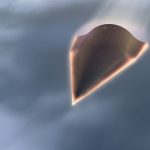
Cruise missile subs best offense against Chinese area denial tactics: Report
Thursday, April 07, 2016 by usafeaturesmedia
http://www.nationalsecurity.news/2016-04-07-cruise-missile-subs-best-offense-against-chinese-area-denial-tactics-report

(NationalSecurity.news) The Chinese military is pursuing an anti-access/area denial (A2/AD) strategy to keep the U.S. Navy at bay during any future conflict in the South China Sea, but one way to defeat that strategy may be to increase flight distance of sub-launched cruise missiles, The National Interest reported.
How to breach China’s increasingly stout A2/AD umbrella has vexed U.S. military planners for the past few years and it continues to be a scenario the Pentagon routinely revisits, especially with the so-called American “pivot” to Asia. And while there are not yet any clear answers to the question, some options are nevertheless beginning to emerge.
One of the most feasible is developing longer-range weapons, since the relative striking distance of the Navy’s large-deck aircraft carriers is increasingly short, given the fact that Chinese missiles and subs have closed the gap. At present, American carriers would have to operate well within China’s A2/AD envelope, which of course then makes them vulnerable to attack.
Because of that vulnerability, The National Interest notes, carriers are not likely to take part in “first day(s) of war” operations – to be involved in opening salvos and attacks on the enemy’s A2/AD door, when defenses are their strongest.
That said, however, the U.S. does possess some deep-strike capabilities that stand a better chance of breaching an anti-access barrier. One is the Air Force’s stealth bombers, and another is the U.S. Navy’s Tomahawk land-attack cruise missiles, deployed on cruisers, destroyers and submarines.
Regarding naval platforms, the Ohio-class nuclear powered submarine is definitely the most lethal in terms of the Tomahawk capacity, and it is also the most survivable due to its extremely low observability. It has both stealth and firepower, making it arguably the best A2/AD naval platform in the U.S. arsenal.
More:
The Ohio-class boats initially began as ballistic missile subs (SSBNs) before being converted to underwater Arsenal Ships during the mid-2000s. As they were being refitted, the 24 ballistic missile tubes were modified to each receive a special canister that allows for storage of seven Tomahawk missiles each. Two of the subs’ missile silos were adapted to support special operations for at least 66 Navy SEALs.
The strategy has worked, and recently. For instance, the USS Florida fired 93 of the 199 Tomahawks used to disable and destroy Libya’s air defense network during that campaign.
At the time, then-Rear Adm. Rick Breckenridge noted, “This [using subs to fire Tomahawks] gets back [to the] principle (that if) we don’t have superiority in the air to have our way at the onset of a crisis, we’re going to need somebody who can penetrate the defenses and soften up the adversary so then we can flow those other forces in to establish air dominance. . . . So in the onset of that campaign. . . the undersea forces. . . were called upon to attack land targets in Libya.”
But the Ohio-class is set to be replaced by the Virginia-class SSGN, which will hold considerably fewer Tomahawks. And surface ships’ payloads of Tomahawks will likely be halved, at least, replaced by air defense missiles.
In the meantime, however, as longer-range missiles are being developed, the Ohio-class boats appear to be the best option the Pentagon has in order to defeat China’s growing A2/AD capability.
See also:
NationalSecurity.news is part of the USA Features Media network.
Tagged Under: Tags: A2/AD, China, Ohio-class submarine, Tomahawk cruise missile






